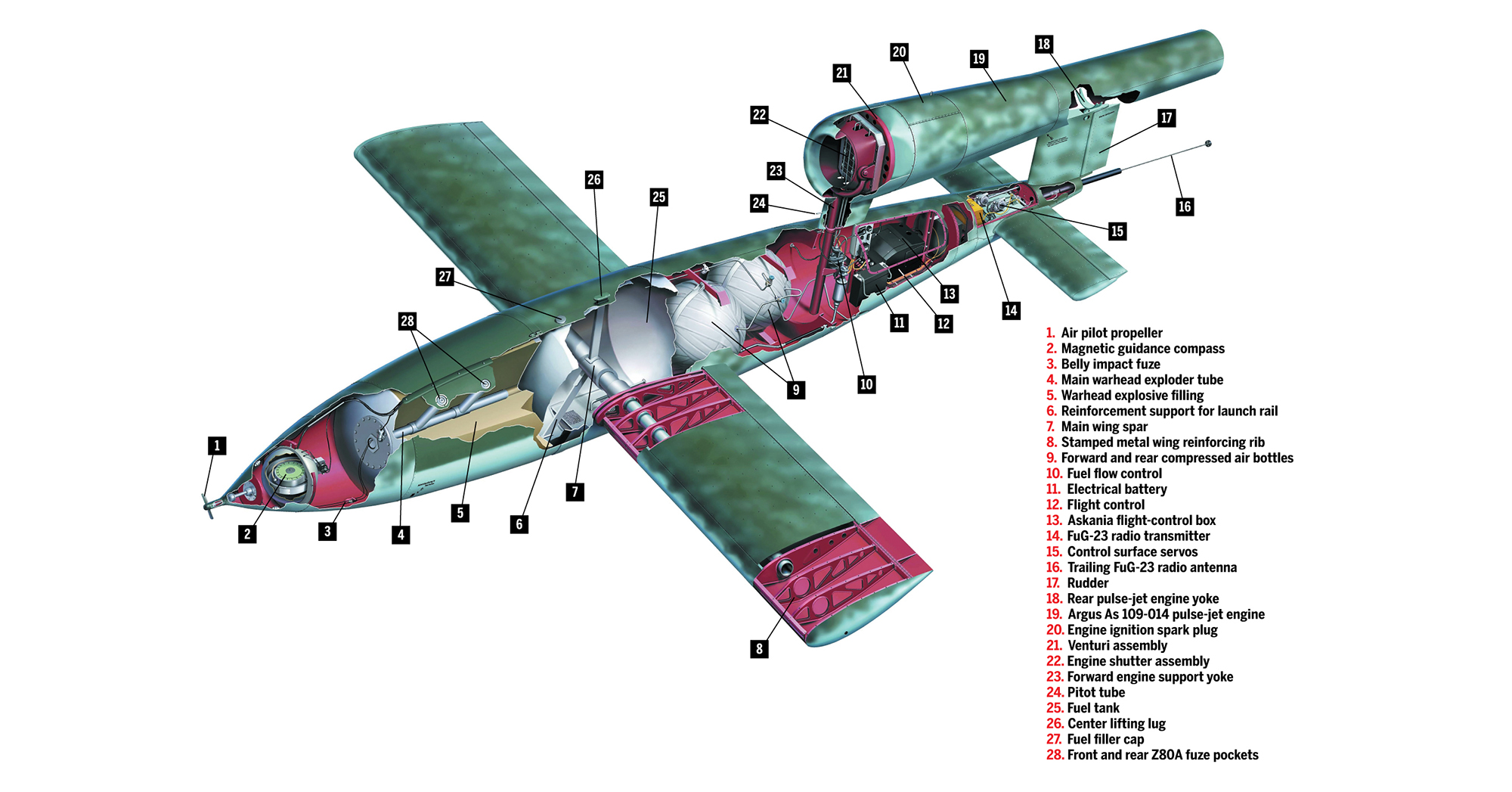V-1 (Fieseler Fi 103)
Engine: Argus As 109-014 pulse-jet engine
Length: 27 feet 4 inches
Wingspan: 17 feet 7 inches
Fuselage diameter: 2 feet 9 inches
Weight: 4,740 pounds
Armament: 1,870-pound Amatol high-explosive warhead
Launchers: Ground launched from a Walter WR 2.3 ramp (with six to eight modular sections totaling between 118 and 158 feet long) or air-dropped in pairs from a Heinkel He 111H-22 bomber
Guidance: Askania autopilot with gyro inertial platform and magnetic compass
Operational range: 160 miles
By 1942 Adolf Hitler was keen to wreak vengeance on Britain, both for the humiliation it had handed him in 1940 and for its ongoing bombing campaign against Germany. That June the Luftwaffe began development of a cheap, disposable guided flying bomb with a welded sheet steel fuselage and plywood wings. The Fieseler Fi 103 (also known as the V-1, as it was the first of Germany’s proposed Vergeltungswaffen, or “retaliatory weapons”) achieved its first powered launch that Christmas Eve, though not until June 13, 1944—a week after Allied forces landed in Normandy, France—were the first V-1s launched at London.
Germany hurled more than 10,000 V-1s at Britain and some 2,500 at Belgium before its last launch site was overrun on March 29, 1945. The “buzz bombs” (so nicknamed for their distinctive engine stutter) killed an estimated 11,000 people in both nations. Thankfully, Allied anti-aircraft and air-to-air defenses knocked down thousands of “divers” (as British Royal Air Force fighter pilots called them). By carefully slipping a wing tip beneath that of a V-1 and then “turtling” it, a pilot could disrupt the flying bomb’s gyros and send it spiraling out of control, though scores of crewmen paid for such daring with their lives.
The only warning of an imminent V-1 strike was when a cutoff sequence killed the buzz bomb’s noisy engine, sending it into a silent 10- to 12-second dive. Yet the V-1 never sparked the level of terror Hitler hoped would pressure the Allies to sue for peace. After the war the United States, France and the Soviet Union each reverse-engineered the V-1, which is regarded as a crude progenitor of the modern-day cruise missile. MH
This article was published in the March 2022 issue of Military History.






